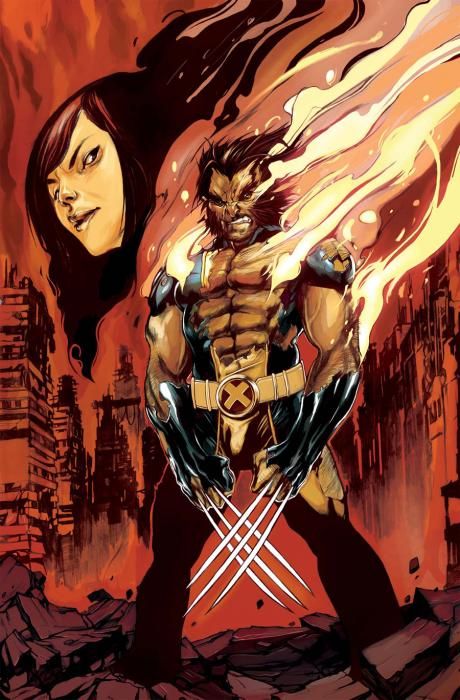"Wolverine and Jubilee" #3 propels this fantastic mini-series forward toward its last issue with masterful strokes. Strong from issue one, this issue builds the tension nicely as we head toward a dramatic conclusion.
In this issue, while in Siberia, the mysterious vampire in white jaunts Jubilee to who knows where, using her as a bargaining chip to get Wolverine to go into Chernobyl's Exclusion Zone to retrieve a package. She's sent many a messenger in to get it, but the radiation has killed them all and she needs Wolverine's special healing factor to ensure he makes it out alive. While Jubilee investigates her strange otherworld prison, Rockslide is back on Utopia doing an investigation of his own into the mysteries surrounding Wolverine and Jubilee's trip.
Kathryn Immonen has an excellent grasp on both Wolverine and Jubilee here and is doing a fantastic job juggling both the newly revamped Wolverine and Jubilee relationship and an intriguing plot. Immonen writes a wonderful world weary old man Wolverine that is still the best at what he does, and when paired with the newly grouchy, darker Jubilee there's a surprising amount of ground to be mined and she does it to great effect. The relationship between the two characters is the cornerstone to this book. The work Immonen has done here has massively revitalized both characters, separately and as a pair. There are times in the past when Immonen's writing has become too complicated for its own good, sometimes sacrificing clarity for jokes, but there's no sign of that here as we hurtle toward the end of a gripping mini-series.
Phil Noto continues to hit the art out of the park on this series. His pencils are, in a word, sublime. They're incredibly functional - clean and easy to read - but also expressive and consistent and full of character. A slim wordless panel of just Wolverine's bored seen-it-all, done-it-all-before eyes tells a thousand internal words and reminds readers everywhere what really great comic book storytelling is about. There's not a visual misstep in the book, and Immonen and Noto are working together with perfect clarity, each seeming to know when to let the other shine. Immonen exhibits a restraint with her text that has sometimes in the past felt missing, and Noto never tries to overreach with his art, relying on simple excellent character work and functional storytelling.
So far, this is the kind of mini-series that makes one wish it was an ongoing. Immonen and Noto together are a kind of perfect dream team that would be welcome on any book.

